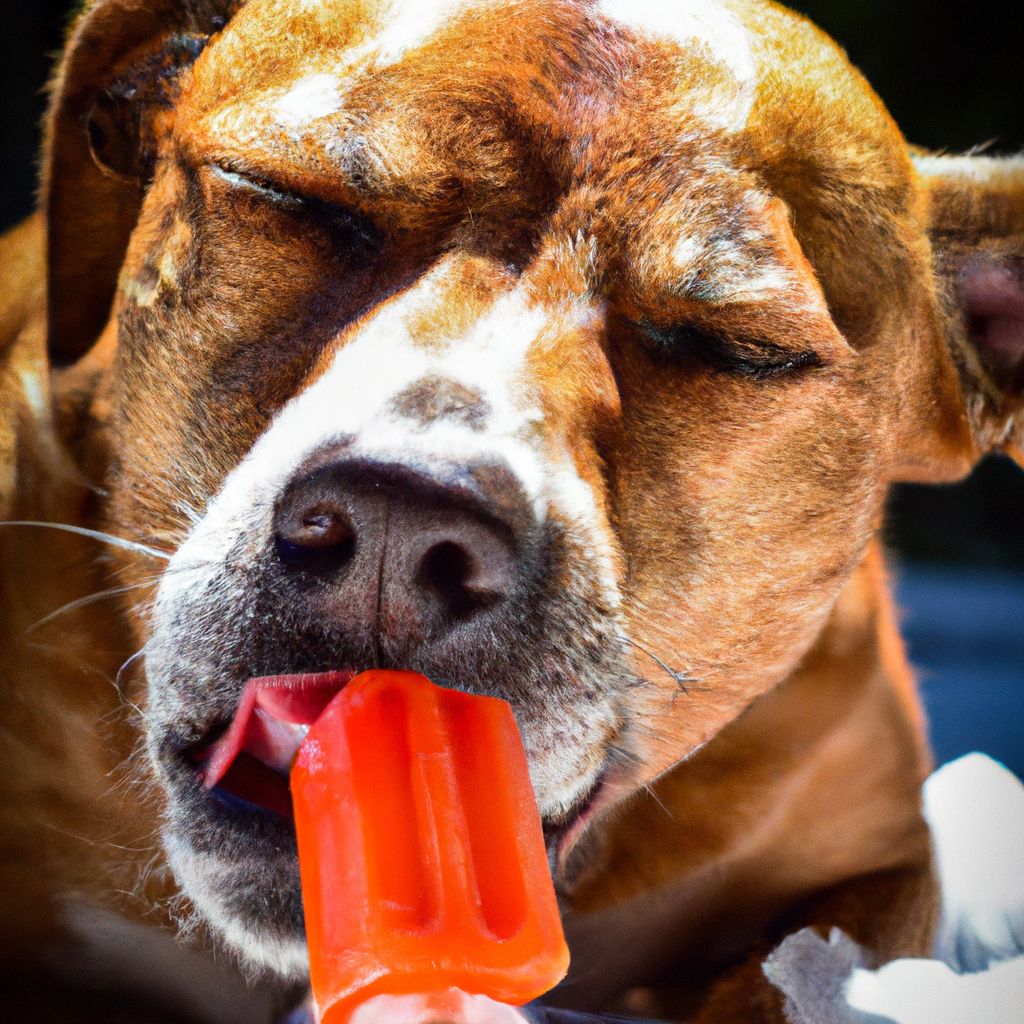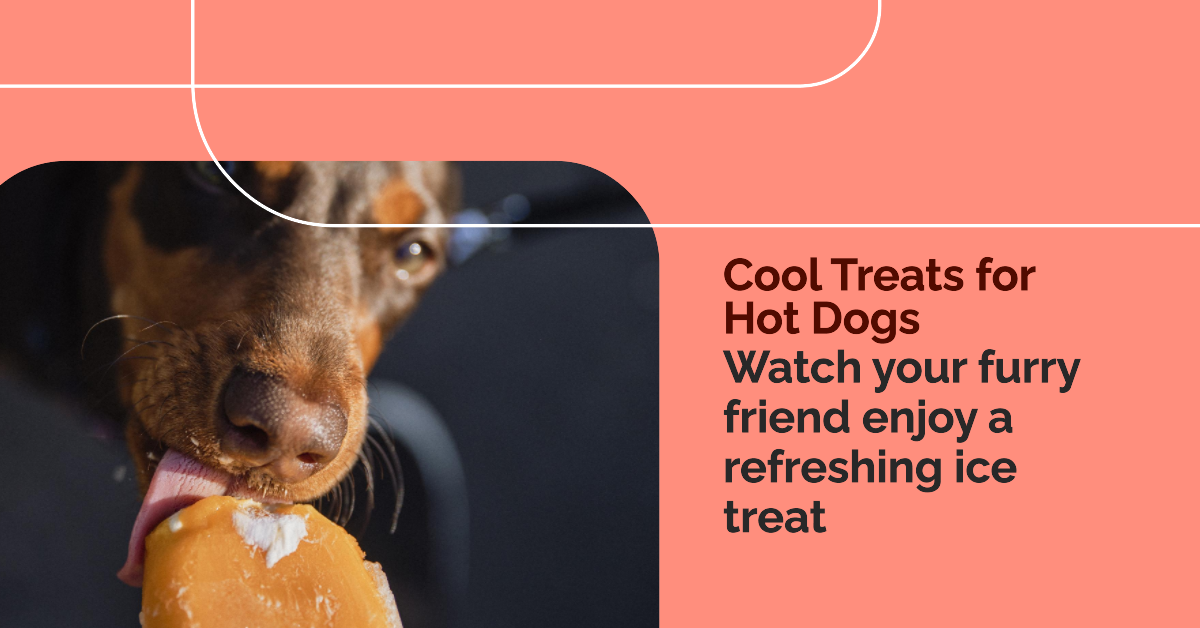

Introduction
Our dogs and their love for ice, a never-ending fascination! Why is this frozen treat so special to them? Let's explore the reasons behind this canine preference.
Quenching thirst and cooling down on hot days are likely explanations. But there's more than what meets the eye. Dogs like to investigate new sensations, and ice provides a unique experience. The texture, temperature, and crunchiness – all contribute to their enjoyment of this delight.
Experts suggest chewing on ice may be soothing for dogs with dental discomfort or teething puppies. The coldness numbs any pain, giving temporary relief. And it satisfies a dog's natural urge to chew and keep their teeth clean.
A Labrador Retriever named Max loves his icy playtime routine. Every winter, when the first snowflake falls, Max eagerly rushes outside and starts chomping on chunks of snow. His excited antics bring joy to everyone around him. Even the simplest things can provide immense happiness and entertainment for our four-legged companions.
Unraveling the mystery of dogs and ice – Why Does My Dog Love Ice!
The Science Behind Dogs and Ice
The fascinating relationship between dogs and ice can be explained through scientific reasoning. By understanding the science behind dogs' love for ice, we can delve into their physiological and behavioral responses when exposed to this frozen substance.
To shed light on the topic, let's explore the key elements that contribute to the science behind dogs and ice.
| Factors | Effects |
| Cooling Effect | The low temperature of ice provides dogs with a refreshing and cooling sensation, especially during hot weather. |
| Taste and Texture | The crunchiness and unique texture of ice offer a satisfying sensory experience for dogs, intriguing their taste buds. |
| Hydration | Sucking on ice cubes can often be a way for dogs to stay hydrated, especially when access to water is limited. |
| Chewing Instinct | Dogs naturally have a desire to chew on objects, and ice cubes can serve as a safe and enjoyable option to fulfill this instinct. |
Exploring further, there are some intriguing details worth noting. For instance, certain breeds such as Huskies, Malamutes, and Newfoundlands have a greater affinity for ice due to their genetic predispositions. Additionally, the size and shape of the ice cubes can influence a dog's interest and engagement.
Now that we've discovered the science behind dogs and ice, consider incorporating this knowledge into your pet's routine. Offer them the occasional ice cube as a treat or consider freezing their favorite toys in water for added stimulation.
Make sure you don't miss out on providing your furry friend with this enjoyable experience. Embrace the science behind dogs and ice, giving them the opportunity to indulge in this fascinating behavior.
Why does my dog love ice? Well, with their nose for trouble and taste buds for mischief, that chilly sensation is like a canine cocktail party going on inside their tiny mouths.
Understanding a Dog's Sense of Smell and Taste
A dog's sense of smell and taste is extraordinary. They have up to 300 million olfactory receptors compared to our 6 million. This heightened sense allows them to detect specific odors, such as diseases or emotions. Also, dogs can have up to 1,700 taste buds per square inch. This lets them savor flavors in a much deeper way than humans can.
Different breeds of dogs may have different preferences when it comes to taste and smell. Genetics influence these preferences and can affect their diet.
We can use various methods to improve a dog's everyday experiences. Interactive toys that require their olfactory skills to find rewards can be fun. Also, scent-based training techniques can help them learn faster.
When selecting food, it's important to consider a dog's sense of smell and taste. High-quality, nutritious food will make them happier and healthier. Incorporating natural or freeze-dried treats during training sessions can stimulate their senses and make learning more enjoyable.
Dogs have a new way to hang out, but let's hope they don't start wanting ice cream trucks in the park!
The Health Benefits of Dogs Eating Ice
Ice is not just a refreshing treat for humans; dogs also have a fondness for it. But why do our furry friends enjoy chomping on frozen water? Interestingly, there are several health benefits associated with dogs eating ice that can contribute to their overall well-being.
- Hydration: Ice can be a source of hydration for dogs, especially during hot summer months or periods of physical activity. Chewing on ice cubes can help quench their thirst and keep them cool.
- Dental Health: Chewing on ice can serve as a natural teeth-cleaning activity for dogs. The cold temperature and the crunchy texture of ice help remove tartar and plaque buildup, promoting better dental hygiene.
- Teething Relief: Ice can provide relief for teething puppies. The cold sensation soothes their sore gums and provides a numbing effect, reducing discomfort during this developmental stage.
- Mental Stimulation: Eating ice can also provide mental stimulation for dogs. The act of crunching on ice cubes engages their senses and can alleviate boredom, especially for dogs that need an outlet for their energy.
- Calming Effect: The coldness of ice has a soothing effect on dogs, particularly those with anxiety or inflammation. It can help reduce inflammation in their mouth and throat, providing a sense of relief and comfort.
- Weight Management: Ice can be used as a low-calorie alternative to treats or snacks. Giving your dog ice cubes instead of high-calorie treats can be an effective way to manage their weight and prevent excessive calorie intake.
In addition to these health benefits, it's important to note that not all dogs may have the same preferences or reactions to ice. As with any dietary changes, it's crucial to monitor your dog's behavior and consult with a veterinarian if you have any concerns.
To incorporate ice into your dog's routine, you can try various approaches. For instance, you can freeze low-sodium chicken or beef broth into ice cube trays and offer them as a refreshing and tasty treat. Alternatively, you can add a few ice cubes to their water bowl to encourage hydration.
Understanding the potential health benefits of dogs eating ice allows us to provide them with a simple yet valuable addition to their diet. So next time you hear the familiar sound of ice cubes rattling, remember that it's not just a fun indulgence for your furry companion, but a way to promote their well-being in a number of ways.
Watch out, your dog's love for ice might just make them the coolest canine in town, literally.
Cooling Effect on Dogs' Body Temperature
Eating ice can cool down a dog's body and is beneficial to their health. The coldness helps lower their internal temperature and reduces the risk of overheating. Plus, it keeps them hydrated. This natural cooling method is especially helpful in hot weather or after physical activity.
A table can be made to visualize the cool effects of dogs eating ice. It will have three columns: Temp. Before, Temp. After Ice, & Change in Temp. Each row will represent an individual dog's temps.
Not only does ice cool them down, but chewing on it can also relieve teething or gum inflammation. However, it's important to monitor the size of the ice cubes given to smaller breeds and puppies to avoid choking hazards.
It's interesting to know that this cooling method has been around for centuries in various cultures. Ancient Egyptians used clay pots of water, kept in shaded areas, to keep their dogs cool. This practice is still seen today with owners offering their furry friends frozen treats or access to cold water.
Hydration and Refreshment for Dogs
Dogs need proper hydration and refreshment to stay healthy. Here's what you need to know:
- Water regulates body temp and helps digestion.
- Ice is great for hot weather or after activity.
- Chewing on ice cubes can keep teeth clean.
- Monitor your pup while eating ice, to avoid choking hazards.
- Ice could add variety to their routine.
Small portions of ice, or frozen treats, give hydration without overload. But, some pups may not enjoy it or have sensitivities. So, always check with the vet first.
Pro Tip: Make the ice cubes yummy by adding low-sodium chicken broth or fruit juice.
Hydration is key for your pup's health and happiness. Plus, why do they love ice? Could be refreshment, or just a genetic mutation!
Possible Explanations for Dogs' Love for Ice
The reason behind why dogs have an affinity for ice has intrigued pet owners and experts alike. One potential explanation for this behavior is rooted in their evolutionary history. Canines originated from wolves, who often hunt in cold, snowy environments. Therefore, dogs' preference for ice may be an instinctual response to environmental cues. Another possibility is the texture and coolness of ice, providing a refreshing sensation that dogs find enjoyable. Additionally, ice cubes can serve as a form of mental and physical stimulation, especially during hot weather or when experiencing teething discomfort. Understanding the various factors that contribute to dogs' love for ice can help pet owners cater to their pets' preferences in a meaningful way.
Unique Insights into Dogs' Infatuation with Ice
Moreover, there are some unique details about why dogs love ice that haven't been covered so far. For instance, some dogs may find the sound of crunching ice cubes amusing. This auditory stimulation could add to their enjoyment of chewing on ice. Additionally, some experts speculate that the cold sensation from consuming ice may temporarily numb certain discomforts in dogs' mouths, making it a soothing experience for them. Understanding these specific aspects of dogs' fascination with ice allows pet owners to better comprehend their pets' behaviors and needs.
Unveiling the Intriguing Past of Dogs' Ice Adoration
When delving into the true history of dogs' love for ice, one interesting fact emerges. Ancient Egyptian pharaohs were known to honor their beloved canines by providing them with icy treats. Archaeological findings suggest that these treats were made from crushed ice mixed with honey or fruit juice. This historical tradition highlights the enduring nature of dogs' connection with ice and their appreciation for cold refreshments. From ancient Egypt to modern-day households, dogs' affection for ice remains a captivating aspect of their behavior.
Turns out, your dog's love for ice is just a chilling reminder that it's a habit they've formed since their days as a tiny pup—guess they never learned to let it go.
Habit and Conditioning
To understand the attraction of ice to dogs, let's look at the various factors. Habit, conditioning, and curiosity are key.
Dogs develop a habit of ice consumption due to repeated exposure. Plus, positive reinforcement or associative learning can condition them to enjoy the cooling sensation. And, their curiosity can lead them to experiment with different objects, including ice cubes.
There are other aspects to consider too. Chewing on ice cubes may soothe teething discomfort or dental issues. Also, the coldness of ice can bring relief on hot days.
Pro Tip: If your dog consumes too much ice or acts strangely, speak to a vet for their health and safety.
Sensory Stimulation and Texture
Dogs and ice go hand in hand! The coolness of the cubes stimulates their senses, and the texture offers a unique experience. It's intriguing how these factors provide physical satisfaction and mental stimulation. Here's a closer look at the details:
- Temperature – Ice cubes provide a refreshing contrast to their warm surroundings.
- Mouthfeel – The crunchy texture engages their jaw muscles and satisfies the need to chew.
- Flavor – Although flavorless, ice cubes can enhance other flavors or liquids.
- Novelty – The unique property of frozen water captures their attention.
Give your pup the joy of sensory stimulation and texture. Offer them an occasional treat of ice cubes or mix it into snacks. Witness their delight and join in on the fun together!
Tips for Safely Giving Ice to Dogs
Tips for Safely Providing Ice to Dogs:
- Observe portion control: Give ice in small pieces to prevent choking or stomach discomfort.
- Ensure cleanliness: Use clean ice cubes or ice trays to avoid any contamination.
- Monitor temperature: Do not give ice that is too cold as it may cause discomfort to your dog's teeth or stomach.
- Supervise chewing: Keep an eye on your dog while they enjoy ice to prevent any accidents or injuries.
- Consider dental health: Ice can help clean your dog's teeth but be cautious if they have dental issues.
Additionally, avoid using ice as a substitute for water intake and consult your veterinarian if you have any concerns.
A unique detail to note is that some dogs may become overly excited about ice due to its crunchy texture and cold sensation. It can be a fun and refreshing treat for them during warm weather.
True fact: According to the American Kennel Club (AKC), ice can be a great way to keep your dog hydrated and cool during hot summer months.
Why let your dog play with a bone when they can entertain themselves by chasing ice cubes and proving that summer really is a dog-eat-ice world?
Size and Shape of Ice for Dogs
Ice is a tasty treat for pooches. But, it's important to choose the right size and shape. This prevents injuries and choking hazards.
Here's a guide to know what's suitable for your pup:
| Size | Shape | Benefits |
|---|---|---|
| Small | Cubes | Easily fit in mouth without discomfort. |
| Medium | Crushed | Provides cool sensation. Also, reduces chance of choking. |
| Large | Slices | Melts slowly, keeping pup hydrated during play. |
| Extra-Large | Bone-shaped | Fun and cools pup. |
Every doggo is different, so watch how they handle different sizes and shapes before settling.
Use filtered or purified water to make ice for your pup. This removes impurities and lowers risk of stomach upset.
Monitor pup's behavior when giving them ice. If they don't seem comfortable, it's best to stop.
Veterinarians at the AKC say small pieces of ice keep pups hydrated in hot weather and offer refreshment. Offer your pup ice, but ensure it's the right size and shape for safety.
Remember: Ice for dogs is like vodka for humans. Always supervise and moderate intake to avoid accidents on the carpet!
Supervision and Moderation
Givin' ice to doggos can be a chillin' treat, but careful supervision is important. Here are some tips for safety and enjoyment:
- Watch 'em closely to avoid choking hazards.
- Limit the amount of ice to prevent upset tummies or brain freeze.
- Crush it into smaller pieces for easier consumption.
- Look out for signs of discomfort or digestion issues.
- Check with the vet if they have dental problems.
- Avoid for doggos with health problems like kidney or diabetes.
Observe their reactions and adjust accordingly. Moderation is key for a pup's icy treat.
Pro Tip: Freeze low-sodium chicken broth or pureed fruits for flavor and nutrition. But no winter ice-eating contests! They'd win paws-itively.
Conclusion: Embracing Your Dog's Ice-Cravings
Your pup's love of ice may seem puzzling, but there are a few logical reasons. Chewing ice can provide them dental relief and a cooling sensation. Also, it can be a source of hydration without adding calories or sugar. In the wild, dogs would come across frozen water sources. They have temperature receptors in their mouths that allow them to enjoy the cold. Plus, chewing ice may give them mental stimulation.
To embrace your pup's ice-cravings, you can:
- Offer plenty of fresh clean water.
- Freeze treats or fruit in ice cubes.
- Choose crushed ice or special chew toys instead of regular ice if they chew aggressively.
- Monitor their intake – too much can lead to stomachaches or tooth damage.
By following these guidelines, you can give them what they crave while promoting their health.





